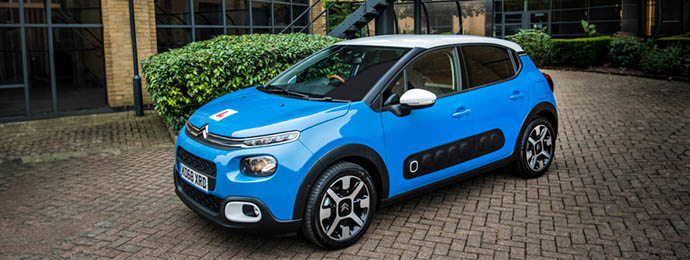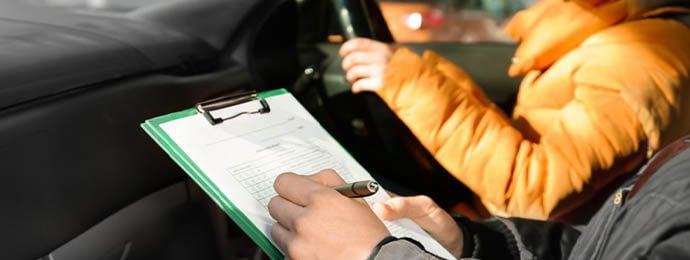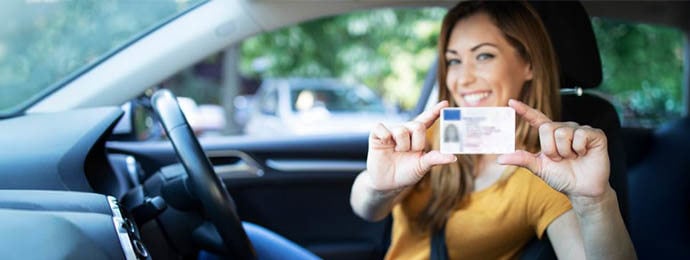Ultimate Guide to Passing Your UK Driving Test
Taking your driving test in the UK can be a daunting experience, but understanding the process and the types of challenges you could experience can help you feel more prepared and confident on test day. This guide walks you through everything you need to know about the UK driving test, including how to book your test, how the test is structured, how many minor faults are allowed, and tips to help you pass.
All the information provided in this guide is up to date and sourced from the official DVSA GOV.UK to ensure you have the most accurate and essential information.

Before you can take the driving test, you’ll need to book it through the official DVSA booking system. Make sure you have your provisional driving licence number and payment ready. It’s a good idea to book your test well in advance, as waiting times can vary depending on your location.
Timing when to take your driving test can play a significant role in your overall experience on the day. Here's what to consider when selecting a date and time:
- Season: Winter tests may be challenging due to icy roads, so consider warmer months for better conditions.
- Day of the Week: Weekdays can be busier with rush-hour traffic, while Saturday tests are pricier.
- Time of Day: Mid-morning or mid-afternoon slots often avoid heavy traffic, making the test less stressful.
Choose a time that matches your confidence and driving ability in different conditions.
What to Bring on the Day of Your Driving Test
On the day of your test, make sure you have:
- Your provisional driving licence
- Confirmation of your test appointment
- Glasses or contact lenses if you need them for driving
- A fully insured, roadworthy car (if you're using your own)
The driving test is designed to assess your ability to drive safely and independently in various road and traffic conditions. There are five parts to the driving test and the test is the same for both manual and automatic cars.
How long does the driving test last? You’ll drive for around 40 minutes. However, if you’re taking an extended test because of a driving ban, it will last around 70 minutes.
You must be able to read a number plate from 20 metres (for new-style plates) or 20.5 metres (for older ones). Failing the eyesight check means an automatic fail, and the test will end immediately.
These are two vehicle safety questions. A ‘tell me’ question is asked before you begin driving, and a ‘show me’ question is asked while you’re driving. Mistakes in these can lead to a driving fault (minor).
- Parallel parking
- Parking in a bay
- Pulling up on the right and reversing for around 2 car lengths
You'll drive for about 20 minutes, either following directions from a sat nav set by the examiner or following road signs. If you take a wrong turn, it won’t count as a fault, as long as it’s done safely. The examiner will assist you in getting back on the correct route.

During your driving test, the examiner will assess your driving and mark you based on any faults you make. There are 3 types of faults you can make:
- Dangerous faults: Immediate risk to you, your examiner, or other road users, resulting in an instant fail.
- Serious faults: These have the potential to become dangerous and also result in a fail.
- Driving faults (minors): Less serious and do not cause immediate danger, but can lead to failure if accumulated.
You can make up to 15 minor faults during your driving test and still pass. However, if you accumulate 16 or more minors, you will fail the test. Additionally, if you repeat the same minor fault multiple times (usually three or more in the same category), it can escalate to a major fault, which results in an immediate fail.
For example, not checking your mirrors at a junction might be marked as a minor fault, but failing to check mirrors multiple times could turn into a serious fault, leading to failure.
Many learners fail due to either an accumulation of minor faults or a single serious fault. Below are some of the most frequent reasons:
A combination of minor faults can accumulate and lead to a failed test. The most common reasons include:
- Ineffective observations at junctions: Failing to check for traffic properly can lead to dangerous situations.
- Incorrect use of mirrors when changing direction: Not checking mirrors before moving lanes or turning is a frequent issue.
- Poor control during reversing manoeuvres: Mistakes during reversing tasks, such as parallel parking, often result in faults.
- Incorrect positioning when turning right: Poor positioning at junctions or roundabouts is another common error.
A single serious or dangerous fault, commonly called a "major," results in an automatic fail. Some of the most common major faults include:
- Ineffective observations at junctions: One of the top reasons for immediate failure as it puts both you and other road users at risk.
- Failing to respond to traffic signals or road signs: Ignoring red lights or misinterpreting road signs can create dangerous situations.
- Incorrect positioning when turning or manoeuvring: Being in the wrong lane or incorrectly positioning yourself at junctions can lead to accidents.
These are crucial areas to practice before your test. So, to improve your chances of passing, focus on these areas during your lessons and be sure to demonstrate good observation and positioning throughout your test.

To pass your driving test, you need to avoid any serious or dangerous faults and accumulate no more than 15 minor faults. If you pass, the examiner will:
- Inform you of any faults made during the test.
- Issue you a pass certificate.
- Ask if you want your full driving licence sent automatically. If so, hand over your provisional licence. Alternatively, you can apply for your full licence within two years of passing the test.
If you fail, the examiner will explain which faults caused your failure. You will need to:
- Book another test and pay the fee again.
- Wait at least 10 working days before retaking the test.
If you believe the test was not conducted properly, you can appeal the decision by contacting the Driver and Vehicle Standards Agency (DVSA).
Once you've passed your test, you can drive immediately, you don’t need to wait for your physical licence to arrive. However, if your licence hasn’t arrived after three weeks, contact the DVLA.
- Practice regularly: The more experience you have in different driving conditions, the more comfortable you'll be during your test.
- Stay calm: Nerves can lead to mistakes, so take deep breaths and focus on each task.
- Revise your theory: Your understanding of road rules will help you make better decisions.
- Mock tests: These are a great way to simulate a test environment, preparing you for the pressure on the day.
For more information and tips check out our How to Pass Your Driving Test First Time in the UK blog.
Overall, passing your driving test in the UK comes down to steering clear of major and dangerous faults while managing any minor ones. It's okay to make a few minor faults, but try to be aware of them and correct them quickly. By staying calm, practising consistently, and focusing on key areas like positioning, you'll increase your chances of passing. Remember, it's not the end of the road if things don't go as planned on the test day. You can always try again.
Nationwide Vehicle Contracts are one of the UK's leading vehicle leasing brokers and offers a range of leasing deals to suit every need. To find out more, check out our comprehensive car leasing guides or call one of our experts on 0345 811 9595.
Guide Information
Originally published: 22nd October 2024
